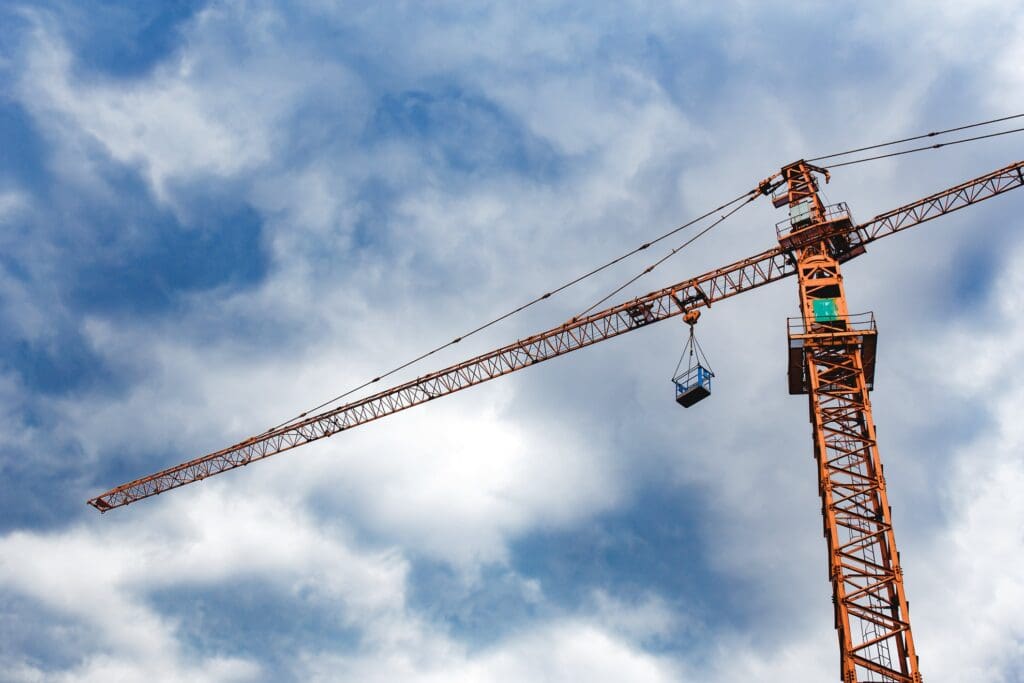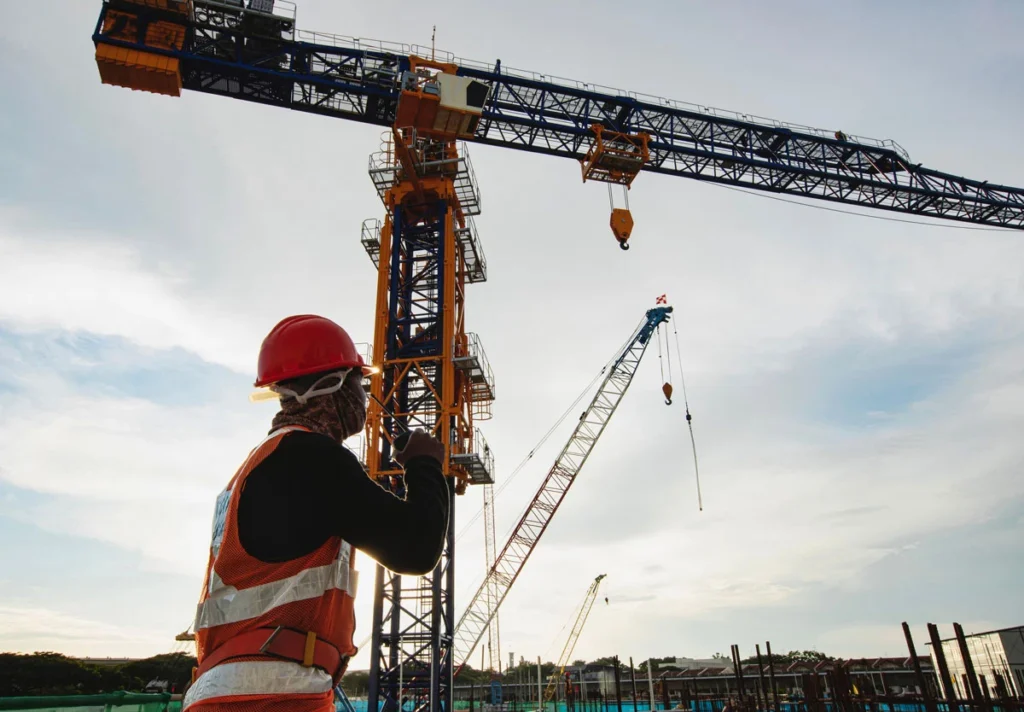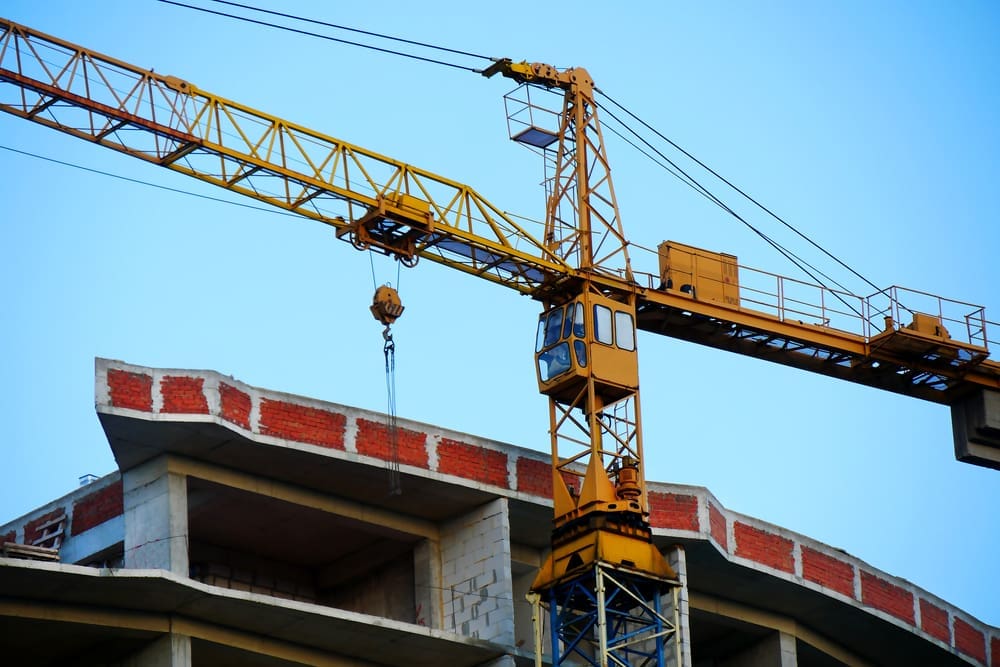Learning how to operate a tower crane safely is not just about knowing the controls; it’s about understanding the machine, following proper steps, and committing to safety every single time.
At Heavy Equipment Colleges of America (HEC), we’ve helped up-and-coming crane operators understand the basics of crane safety and build a successful career in the industry. This guide will help you understand the different types of cranes, the components of a tower crane, and the process of operating one while adhering to safety regulations.
Whether you’re an aspiring operator or already working in the construction industry, following these guidelines can help prevent accidents, protect workers, and enhance job efficiency.
Table of Contents
Types of Cranes and How to Choose the Right One
Cranes vary depending on the type of construction project. There are a variety of tower crane types that work best for certain tasks or projects, and understanding the differences can help you choose the right one for your job site.
Common types of tower cranes include:
- Hammerhead Cranes: These are the most common type of crane, consisting of a horizontal jib that rotates 360 degrees. These cranes are highly versatile and can handle large, repetitive lifts.
- Luffing Jib Cranes: These cranes feature a movable jib that can be raised or lowered, making them ideal for tight urban spaces where swing radius is limited.
- Self-Erecting Cranes: These are quick to set up and are often used for smaller projects or sites with limited space. They typically require less foundation work and are good for lighter loads.
Selecting the right type for your project affects both efficiency and safety. Using the wrong crane could lead to delays, wasted money, and unsafe lifting conditions.
When deciding which crane to use, you’ll need to consider:
- Lifting Capacity: How heavy are the loads you’ll need to move?
- Project Location: Is it in a busy city, open field, or industrial yard?
- Available Space: Do you have room for a full swing radius, or will you need a luffing jib?
- Height Requirements: Will you be lifting materials to multiple floors or extreme heights?

Understanding the Basic Parts of a Crane
Before you can learn how to operate a tower crane safely, you need to know its main components and what they do. This knowledge helps you spot potential issues, communicate with maintenance crews, and operate more efficiently.
Key parts of a tower crane include:
- Mast (Tower): The tall vertical section that provides the crane’s height and stability.
- Slewing Unit: The machinery at the top of the mast that allows the crane to rotate.
- Jib (Working Arm): The horizontal arm that extends from the mast and carries the load.
- Counter Jib: Extends in the opposite direction of the jib and holds counterweights to balance the crane.
- Counterweights: Heavy weights placed on the counter jib to offset the load on the main jib.
- Operator’s Cab: The control center where the operator sits and manages the crane’s functions.
- Hoist: The system of ropes, pulleys, and motors that lifts and lowers the load.
Safety Hazards in Tower Crane Operation
To remain safe and to keep other workers safe, keep safety top of mind. Learn more about Tower crane safety and how you can avoid common hazards.
Get More Information!Start Your Online ApplicationThe Importance of Training and Certification
Operating a tower crane requires formal training and certification. This is not a skill you can learn through trial and error, as it’s a high-risk job that demands knowledge, precision, and compliance with strict regulations.
In the United States, OSHA requires that all tower crane operators be certified through an accredited program such as the National Commission for the Certification of Crane Operators (NCCCO).
A typical tower crane operation training program teaches topics such as:
- Safe Operating Procedures: This often includes understanding the controls, startup/shutdown sequences, and emergency stops.
- Load Chart Reading: Knowing how to read a load chart helps you understand how much weight you can safely lift at different boom lengths and angles.
- Equipment Inspection: Students learn how to identify wear, damage, or mechanical problems before starting work.
- Emergency Protocols: The right certification program ensures you know how to respond quickly to mechanical failures, weather hazards, or other site emergencies.
If you’re looking to get certified, the Tower Crane Certification Program at Heavy Equipment Colleges of America offers hands-on, real-world training to prepare you for NCCCO exams.

Step-by-Step Guide to Operating a Tower Crane
Operating a tower crane safely involves following a consistent, detailed process every time you’re at the controls. Skipping steps can put you, your coworkers, and the project at risk.
Here’s a more detailed, step-by-step breakdown:
- Inspect the Crane Thoroughly: Begin with a pre-operation inspection. Look for cracks, worn cables, loose bolts, and leaks. Check the mast sections, slewing ring, counterweights, and hoist system. If you spot any issues, report them immediately.
- Review the Lift Plan: The lift plan should outline the load weight, lifting path, and weather conditions. Review it with your team so everyone understands their role.
- Check Weather Conditions: High winds, lightning, and heavy rain can make crane operation unsafe. Most tower cranes have a maximum safe wind speed, which is typically around 20 to 25 mph. Always follow manufacturer and site safety guidelines.
- Enter the Cab Safely: Use three points of contact (two hands and one foot, or two feet and one hand) when climbing. Wear your PPE, including a hard hat, safety harness, and gloves. Keep tools secure so nothing falls from height.
- Power Up the Controls: Follow the manufacturer’s startup sequence. This usually involves turning on the master power, engaging safety systems, and running diagnostic checks to ensure all systems are functional.
- Test the Systems: Before lifting any load, test the crane’s movement. Slowly rotate the jib, operate the hoist, and check the trolley movement. Listen for unusual noises, which may indicate mechanical issues.
- Secure and Lift the Load: Ensure the load is properly rigged with the correct slings, hooks, and shackles. Lift slowly at first to confirm balance. Never jerk the load upward, as sudden movements can cause dangerous swinging.
- Move the Load Carefully: Keep the load close to the ground when possible until it’s in position. Be sure to maintain smooth, steady movements. Always keep the load in your line of sight and stay in constant communication with your signal person.
- Lower the Load with Control: Slow and steady is key when lowering. Follow site guidelines for placing the load, and never drop it or release tension too quickly.
- Shut Down Properly: At the end of the shift, return the jib to its parking position, secure the hook, and turn off all controls. Lock the cab if required and follow the site’s end-of-day security protocol.

Tower Crane Operation Safety Guidelines
Safety is the top priority in crane operations. Even experienced operators must stay vigilant and follow established protocols. Here are key safety guidelines to remember:
- Wear the Required PPE: Always wear a hard hat, safety harness, gloves, steel-toe boots, and other personal safety equipment.
- Know the Load Chart: Never guess how much weight you can lift. Exceeding capacity can cause tip-overs or mechanical failure.
- Stay Clear of Power Lines: Maintain a safe clearance of at least 10 feet for low-voltage lines, and more for higher voltages.
- Use a Signal Person: For complex or blind lifts, a qualified signal person ensures safe and precise load placement.
- Avoid Sudden Movements: Quick starts, stops, or changes in direction can cause the load to swing dangerously.
- Perform Daily Inspections: A quick visual and operational check can catch small problems before they become dangerous.
- Follow Weather Protocols: High winds, heavy rain, or lightning should pause operations immediately.
Starting Your Career as a Crane Operator
Becoming a crane operator can also lead to high-paying, specialized roles in construction and heavy industry. The demand for skilled operators is high, and with the right training, you can qualify for jobs across multiple sectors.
If you’re ready to begin your journey as a certified tower crane operator, you can apply online today. Heavy Equipment Colleges of America offers a variety of heavy equipment programs that include hands-on learning and expert instruction. This way, you learn how to operate a crane safely and confidently.
Start Your Crane Operator Career With Confidence
Kickstart Your Crane Operator Journey Today!
Hands-On Training | OSHA-Compliant Courses | Job-Ready Skills
Become a Certified Tower Crane Operator Today!
Start Enrollment ProcessFind The Right Location For You
